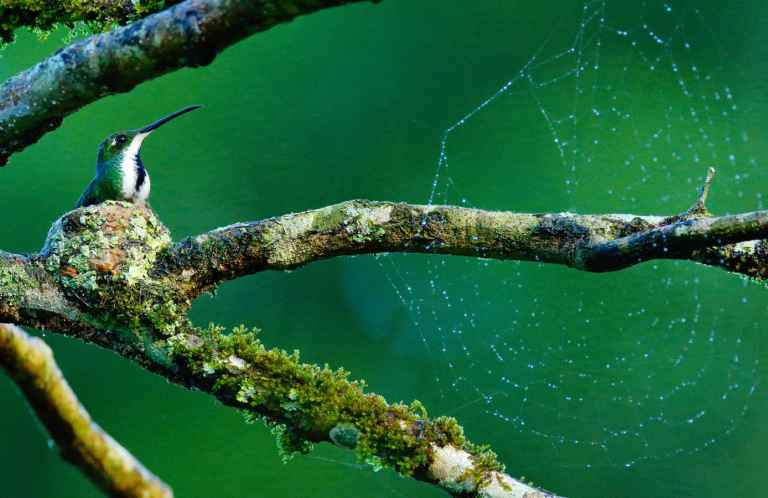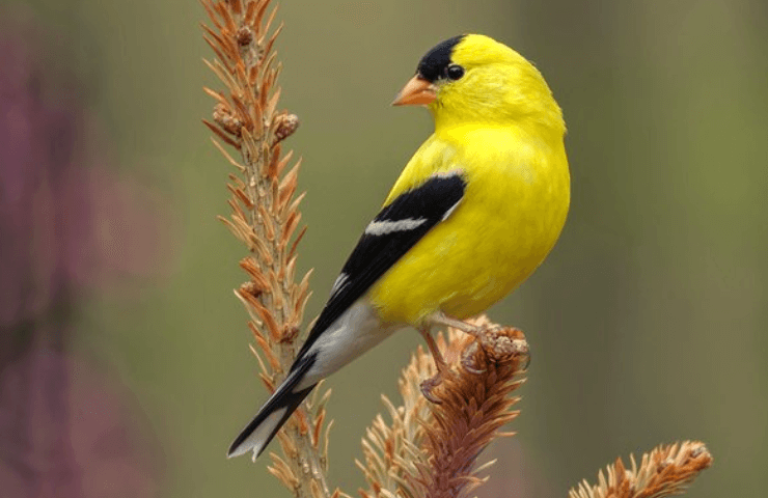A Cradle of Red-shouldered Hawks
For the past four years, a pair of Red-shouldered Hawks have nested above the front door of American Bird Conservancy's Senior Conservation Scientist David Wiedenfeld. In this guest blog, David recounts some of the things he's learned while observing the growing families in the space they both call home.

For the last four years, the large Red Oak in my front yard — about 50 feet from where I sit as I work on ABC projects — has been the cradle of a family of Red-shouldered Hawks.
I live in a very suburban town just outside of Northern Virginia. We do have a lot of trees, parks, water courses, and open spaces, and it's about a mile to open rural land. We've always had Red-shouldered Hawks in the neighborhood on occasion, but right about the turn of the year in early 2021, we noticed the hawks hanging around a lot.
Through January, they would just hang around the yard in an oak or maple tree. Starting in February, we began to notice them carrying sticks, a few at a time. As we got to early March, they were active every day, busily bringing in sticks (and even breaking off green hemlock or Red Cedar branches!) and adding them to the nest in the oak tree. On the Ides of March, it became clear: they were incubating.

“Harvesting” conifer greens in this way isn't a behavior restricted to Red-shouldered Hawks, but not all hawks do it. Red-tailed Hawks, for example, don't, and the presence of evergreen branches in the nest can be a clue as to whether you're looking at a Red-shouldered Hawk and not a Red-tailed Hawk's nest. Why do we figure they do it? The evergreen branches may be a natural insect repellent to help keep insects and other pests away.
For four years now, the hawks have followed the same pattern very closely. They built a nest in February and early March and began incubating right about March 15. The nests have all been in the same tree each year but in three locations. (They reused the 2023 nest in 2024, but in previous years, the nests were in different spots).
The hawks incubate for about a month, so hatching occurs about mid-April. Because the nests are high, we can't see in, so we aren't able to see the chicks until about the first or second week of May when they get big enough to sit up and peer over the edge. But even if we can't see them, it's easy to tell that they've hatched. Chicks eat a lot and the parents bring a near-constant stream of food to their demanding young.
When they first hatch in mid-April, it can still be pretty cool during the day here in Virginia, and cold at night. When it is cold, one of the parents, probably the female, will brood the chicks while they're still downy, while the other parent hunts. But once the chicks start getting bigger and the weather warmer, both parents go hunting.

It can be pretty hard to see what food items the parents bring because they usually just come flying straight into the nest — you only get a quick glimpse as the parents fly by. The most common identifiable items they seem to bring are snakes, mostly rat snakes and garter snakes. The next most common seem to be lizards, especially the Blue-tailed Skinks, followed by rats. They do seem to raid other birds' nests, especially Common Grackles, and we find grackle feathers dropped under the nest.
At first, when they bring some food in, the parents will still tear it up and feed the young. About the time the chicks start wing-flapping in the nest, they can feed themselves, so the parents just bring in a feed item and drop it, spending only a few minutes at the nest. When the chicks reach the “moving-around-the-tree” stage, the parents bringing food just come to the nest, drop the food, and take off immediately, maybe spending only five seconds at the nest. I don't know how they decide whose turn it is to get the food, but the chicks fly down to the nest and eat, then wander away again. By around the end of June, they're pretty independent, and we no longer see the parents bringing food. We do still see and hear them around the neighborhood regularly, though.
By late May or early June, the chicks are getting big enough to show feathers, not just down. Like other raptors, the eggs hatch asynchronously (they don't hatch at the same time), because the eggs are laid about one every other day, and incubation begins when the first one is laid. In both 2021 and 2022, this pair had three chicks, but in 2023 and 2024, they had four. If eggs are laid every other day, this would mean that the last egg was laid about six days after the first, so the chicks will have about a six-day difference in age. As the chicks get older, the age difference becomes apparent: the older chicks become fully feathered, while the younger birds still have down. That changes very quickly, though. Soon, the younger chicks catch up, and once they're all fully feathered, there's no apparent difference between the older and younger birds.

Fledging in hawks is different from what we see in most songbirds. Songbird nestlings usually fledge all at once, or maybe over a couple of days, and just leave their nest and never go back. Red-shouldered Hawks, and many raptors, fledge sort of, well, gradually. As they get near to being able to fly, they do a lot of practice wing-flapping in the nest. Then one, probably the oldest, will hop a short way from the nest on the support branch — maybe two or three feet. Then it will go back to the nest. Then, maybe two of them will hop out, and maybe move to a different branch, but still return to the nest.
After a week or so of this short-term, hop out, hop back in behavior, they're able to fly a bit, and will then start moving farther from the nest, but staying in the nest tree, and returning to the nest to eat. After another week or so, about mid-June, they can fly well, and start dispersing through the neighborhood. Our neighborhood has lots of big trees, so they may move to a tree across the street or in the neighbor's yard a few houses down.

There are some very minor costs to having the hawks in my tree. The nest is right out the front door and up about 30 feet. We want our hawks to be happy, so we try not to disturb them much. That means not using the front door from mid-March to early June, going out the back door and around the house to get to the car and the street. It also means that only minimal yard work gets done in the front until June. The birds don't seem to be too nervous when we are out, but it is a cause of stress we'd like to minimize for them. When we are out and they're incubating or brooding, the parents keep a sharp eye on us, although they don't leave. Once the chicks are big enough to see over the edge of the nest, they also watch us carefully. And another inconvenience: they, uh, poop. It's not an issue with the parents, but when the chicks start getting big, they do poop over the edge.
Red-shouldered Hawks in the wild can live to 26 years, although the average lifespan is probably much closer to 10 years — there are a lot of hazards out there for raptors. They don't usually start breeding until they're two years old.
I suspect the nest in my tree in 2021 was the first nest for the parent birds. That means they were probably two years old, hatched in 2019, making them five years old now. They could be coming back to nest in my tree for many more years. I hope!



















































